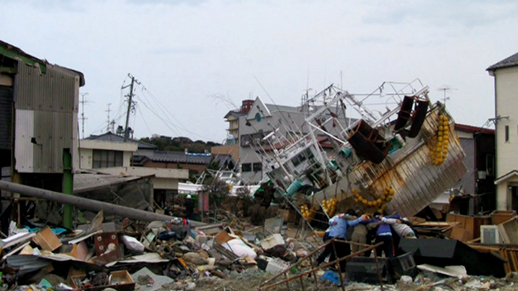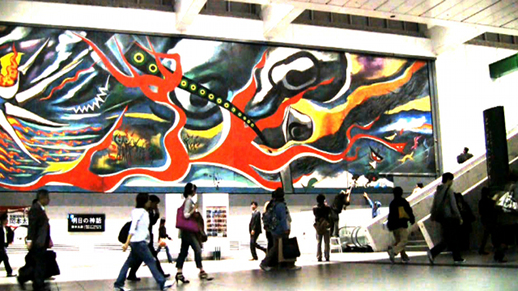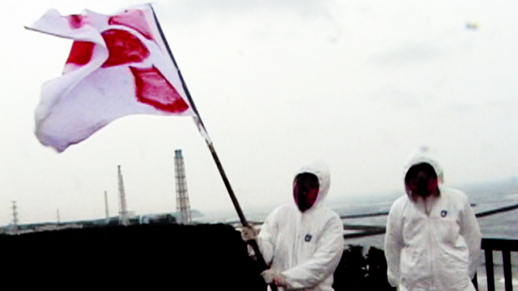Getting Serious
While the recent disasters plaguing Japan’s north-east region have made this a heartbreaking time for all in this country, it has also been one of hope and the triumph of the human spirit. International observers praised Japanese people’s calm actions and community spirit. This has been a time filled with messages of solidarity and the constant call for everyone to keep their spirits high and “ganbarō”, keep persevering.
Unfortunately, the Japanese media’s tendency for excessive sentimentality and hyperbole can have quite the reverse effect on the psyche. While the great earthquake and enormously destructive tsunami were a very real moment for many in northern coastal Japan, the hijacking of the “ganbarō Nippon” message by television programs, politicians and virtually all advertising campaigns since March 11 seems to have left the artists of Chim↑Pom torn between genuine concern and all-out apathy.

Definitely on the apathy side of things was their erotic-power generator, ‘Erokitel’. Telephone calls to a certain sex-line would send signals to their custom generator and light up the room. It was a concept clearly in jest of all the talk of alternative energy sources in light of the nuclear plant crisis. If not nuclear power, why not sexual power?, they ask. In the same vein, a video shot like a football huddle nods to the various sporting analogies to be found in the post-earthquake recovery discourse. In ‘100 KIAI’, all members of Chim↑Pom hold hands in the middle of a circle and take turns calling out—dedications, messages of inspiration, sometimes nonsense—and the rest of the team cheer. The dialogue is only semi-understandable, and after the hundredth cheer the pep-talk loses its climactic rhetoric.
Prior to this exhibition, Chim↑Pom were in the news for one of the acts documented in this show. The group successfully added an extra piece to the epic mural, Taro Okamoto’s ‘The Myth of Tomorrow’, found in Shibuya station. The footage of this illicit act (apparently short-lived) is screened with Edith Piaf’s iconic torch song, Non, je ne regrette rien.

Taro Okamoto is a highly celebrated and loved artist in Japan. Coincidentally, at the time of Chim↑Pom’s public art stunt, there was a major retrospective of Okamoto at the Tokyo National Museum of Modern Art. In this way, Chim↑Pom were living up to their image as dangerous renegades who challenge the sacredness of art. This particular work was targeted also because of the mural’s theme. Okamoto painted an apocalyptic foresight into the future, and Chim↑Pom responded to the work by adding extra imagery of the broken and still-smoking nuclear plant to his vision. For the exhibition, the painting was hung on a wall right next to the video, giving it an air of the artefact rather than art itself.
The masterpiece of the show was the eponymous video, ‘Real Times’. It follows the protective-suited artists as they head to a Fukushima lookout in view of the smoking nuclear plants. On the way, they walk along a road that has been cracked and warped after the earthquake. Once at the lookout, they take out a white flag and start painting what appears to be the red circle, the hinomaru, of Japan’s national flag. However, the hinomaru is modified to resemble another well-known symbol; the sign for radioactive toxic waste.

The title of the exhibition, “Real Times”, suggests that perhaps these post-earthquake days are more real, more serious, than before. Perhaps it is also about the group’s struggle for sincerity rather than their usual tongue-in-cheek approach to various socio-political issues. However, this exhibition also ended with the afterthought that, for the country and for its art, these may be more confusing times than ever before.
Emily Wakeling
Emily Wakeling



